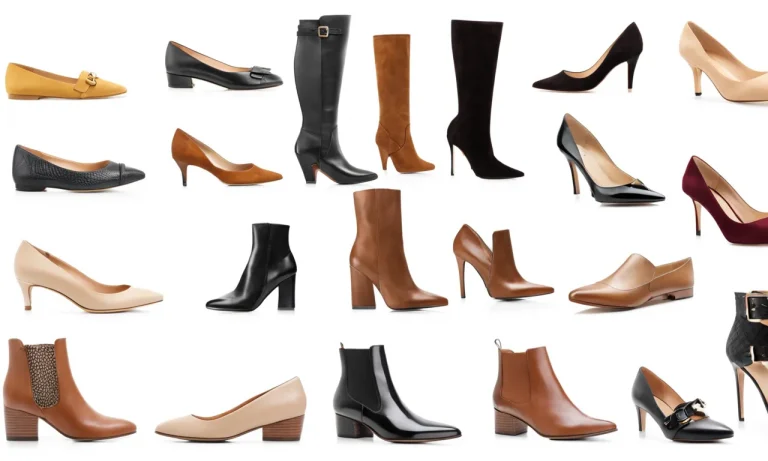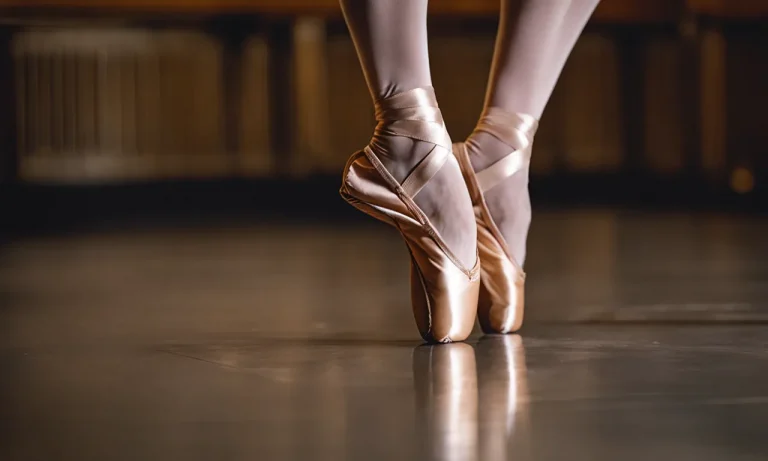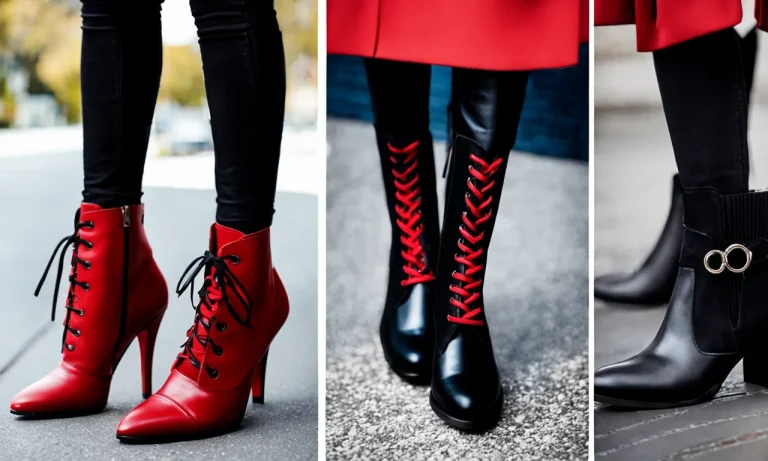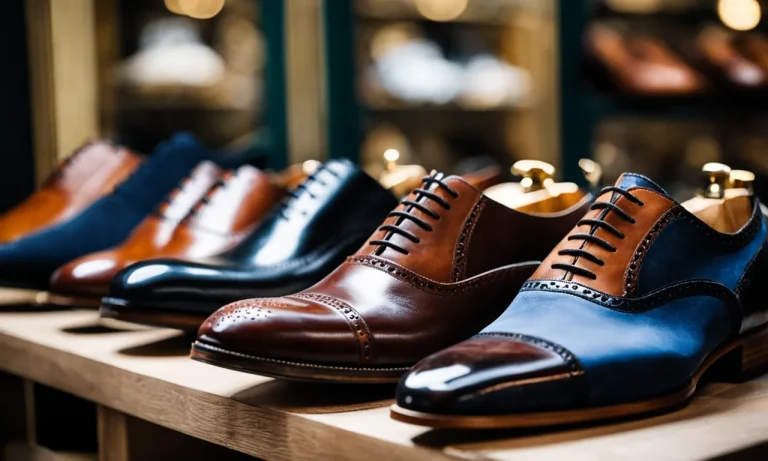Sweaty feet in work boots can be uncomfortable and lead to foot odor. However, with some preparation and the right gear, you can stay dry and comfortable all day.
If you’re short on time, here’s a quick answer to your question: Try wool socks, Odor-eating insoles, moisture wicking liners, and applying antiperspirant to feet before putting on socks.
In this comprehensive guide, we’ll cover everything you need to know to keep your feet cool and dry in work boots, from proper foot hygiene and sock selection to boots features that improve breathability and airflow.
Practice Proper Foot Hygiene
Keeping your feet clean and dry is essential in preventing excessive sweating in work boots. By practicing proper foot hygiene, you can minimize the amount of moisture that builds up in your boots, reducing discomfort and odor.
Wash and dry feet regularly
Start by washing your feet daily with warm water and mild soap. This helps to remove dirt, bacteria, and sweat that can contribute to foot odor. After washing, make sure to dry your feet thoroughly, paying extra attention to the spaces between your toes.
Moisture trapped between the toes can create a breeding ground for bacteria and fungi.
Use antibacterial soap
Using an antibacterial soap can further help eliminate odor-causing bacteria on your feet. Look for soaps that contain ingredients like tea tree oil or eucalyptus oil, known for their antibacterial properties.
These soaps can help reduce the risk of bacterial infections and keep your feet smelling fresh.
Exfoliate to remove dead skin cells
Regularly exfoliating your feet can help remove dead skin cells, which can contribute to foot odor. Use a pumice stone or a foot scrub to gently exfoliate the skin on your feet, paying attention to areas where dead skin tends to accumulate, such as the heels and the balls of your feet.
Apply antiperspirant or powder
Applying an antiperspirant or foot powder can help reduce sweating and keep your feet dry throughout the day. Look for antiperspirants specifically designed for feet, as they are formulated to control moisture and odor.
Alternatively, foot powders can absorb excess moisture and create a dry environment inside your boots.
Remember to reapply antiperspirant or powder as needed, especially if you have a long day ahead or if you know you’ll be in hot and humid conditions. Additionally, consider wearing moisture-wicking socks made from breathable materials to further aid in keeping your feet dry.
By following these foot hygiene practices, you can keep your feet fresh and sweat-free, even when wearing work boots for extended periods.
Choose Socks Designed to Wick Moisture
When it comes to keeping your feet dry and comfortable in work boots, choosing the right socks is essential. Look for socks that are specifically designed to wick moisture away from the skin. These socks are typically made from materials such as wool, bamboo rayon, and polyester blends.
These materials have excellent moisture-wicking properties, which help to keep your feet dry even in the most demanding work conditions.
Look for wool, bamboo rayon, polyester blends
Wool is a natural fiber that is known for its excellent moisture-wicking abilities. It can absorb a large amount of moisture without feeling wet, keeping your feet dry and comfortable throughout the day.
Bamboo rayon is another great option, as it is not only moisture-wicking but also has antimicrobial properties that help prevent odor-causing bacteria from forming. Polyester blends are also popular choices, as they are lightweight, breathable, and quick-drying.
Avoid 100% cotton socks
While cotton is a popular choice for everyday socks, it is not ideal for work boots. Cotton tends to absorb moisture and hold onto it, which can leave your feet feeling damp and sweaty. This can not only be uncomfortable but also increase the risk of blisters and foot odor.
To keep your feet dry, it’s best to avoid 100% cotton socks and opt for moisture-wicking materials instead.
Try two layers of socks
If you find that one pair of socks is not enough to keep your feet dry, you can try wearing two layers of socks. This can provide extra cushioning and absorbency, helping to prevent excessive sweating.
When layering socks, make sure the inner layer is made from a moisture-wicking material, while the outer layer can be a thicker, cushioned sock for added comfort. The combination of these two layers can help to keep your feet dry and comfortable throughout the day.
Use Moisture-Wicking Insoles
One effective way to combat sweaty feet in work boots is by using moisture-wicking insoles. These insoles are designed to absorb and draw moisture away from the feet, keeping them dry and comfortable throughout the day. Here are some tips on how to use moisture-wicking insoles effectively:
Opt for insoles with Dri-Lex nylon or silicone top layers
When choosing moisture-wicking insoles, look for those with Dri-Lex nylon or silicone top layers. These materials are known for their excellent moisture-wicking properties, allowing them to quickly absorb sweat and keep your feet dry.
The moisture is then evaporated, preventing the buildup of moisture inside your boots.
Additionally, insoles with antimicrobial properties can help prevent the growth of bacteria and fungi, which can cause unpleasant odors and foot infections. This can be especially beneficial for individuals who work in environments where their feet are exposed to damp conditions or excessive sweating.
Replace insoles regularly
It’s important to replace your moisture-wicking insoles regularly to maintain their effectiveness. Over time, the insoles may become less efficient at wicking away moisture, reducing their ability to keep your feet dry.
By replacing them on a regular basis, you can ensure that you are getting the maximum benefit from your insoles.
On average, it is recommended to replace insoles every 3-6 months, but this can vary depending on factors such as frequency of use, level of activity, and personal preference. If you notice that your insoles are no longer absorbing moisture effectively or if they start to show signs of wear and tear, it’s time to get a new pair.
Disinfect insoles to avoid bacteria and odor buildup
Bacteria and odor can be a common issue when dealing with sweaty feet. To prevent bacteria growth and keep your work boots smelling fresh, it’s essential to regularly disinfect your moisture-wicking insoles. There are a few ways you can do this:
- Wash with mild soap and water: Remove the insoles from your boots and gently wash them with mild soap and water. Allow them to air dry before placing them back in your boots.
- Use disinfectant sprays or wipes: Another option is to use disinfectant sprays or wipes specifically designed for footwear. Follow the instructions provided by the manufacturer to ensure proper disinfection.
- Consider using UV light sanitizers: UV light sanitizers can be a convenient option for disinfecting your insoles. These devices use ultraviolet light to kill bacteria and fungi effectively.
By regularly disinfecting your insoles, you can prevent the buildup of bacteria and odor, keeping your feet fresh and comfortable in your work boots.
Remember, keeping your feet dry and comfortable is essential for overall foot health and well-being. By incorporating moisture-wicking insoles into your work boot routine and following these tips, you can effectively combat sweaty feet and enjoy a more comfortable workday.
Select Breathable Boots
When it comes to keeping your feet dry and comfortable in work boots, choosing the right pair is crucial. Opting for boots with breathable features can make a significant difference in preventing excessive sweating.
Leather or mesh uppers are excellent choices as they allow more airflow, allowing your feet to breathe and reducing the buildup of sweat. These materials are known for their ability to regulate temperature, keeping your feet cool even during long hours of work.
Leather or Mesh Uppers Allow More Airflow
Leather and mesh uppers are highly recommended for work boots due to their breathability. Leather is a natural material that allows air to circulate, preventing the accumulation of moisture inside the boots.
The porous nature of leather enables the evaporation of sweat, keeping your feet dry and comfortable. On the other hand, boots with mesh uppers provide even more breathability, as the tiny holes in the fabric allow for increased airflow.
This helps to prevent sweat from building up and keeps your feet feeling fresh throughout the day.
Rubber Boots Trap Heat and Sweat
While rubber boots may be durable and waterproof, they are not the best option when it comes to preventing sweaty feet. Rubber is an impermeable material that does not allow air to pass through, which can cause heat and moisture to become trapped inside the boots.
This can lead to uncomfortable and sweaty feet, making it harder for you to focus on your work. If possible, it’s best to avoid rubber boots if you tend to sweat excessively or work in hot environments.
Try Boots with Moisture-Wicking Linings
Another feature to look for in work boots is a moisture-wicking lining. These linings are designed to draw moisture away from your feet and towards the outer layer of the boot, where it can evaporate more easily.
Boots with moisture-wicking linings help to keep your feet dry by actively managing sweat and preventing it from accumulating inside the boot. This can significantly reduce the chances of discomfort and odor caused by excessive sweating.
Remember, selecting breathable work boots with materials like leather or mesh uppers, and moisture-wicking linings can greatly help in keeping your feet from sweating excessively. By choosing the right pair of boots, you can stay comfortable and focused on the task at hand, even during long hours of work.
Use Odor Prevention Products
One effective way to combat sweaty feet in work boots is to use odor prevention products. These products are specially designed to absorb moisture and reduce the growth of odor-causing bacteria. By using these products, you can keep your feet dry and prevent unpleasant odors from developing.
Odor-eating insoles, powders, and sprays
One popular option is to use odor-eating insoles, powders, or sprays. These products are typically infused with ingredients like activated charcoal or baking soda, which help absorb moisture and neutralize odors.
Simply insert the insoles into your work boots or sprinkle the powder inside before wearing them. You can also use sprays to freshen up your boots and eliminate any lingering smells.
Antibacterial boot sprays
Another effective option is to use antibacterial boot sprays. These sprays contain ingredients that kill bacteria and fungi, which can help prevent foot odor. Simply spray the inside of your boots and allow them to dry before wearing.
This can help keep your feet fresh and odor-free throughout the day.
Replace boots regularly to avoid embedded odors
It’s important to note that even with the use of odor prevention products, boots can still accumulate embedded odors over time. To prevent this, it’s recommended to replace your work boots regularly. Over time, the materials in boots can break down and become more difficult to clean, leading to persistent odors.
By replacing your boots, you can ensure that you have a fresh start and minimize the chances of odors developing.
Conclusion
Keeping your feet dry when wearing work boots takes a multi-step approach. With diligent foot hygiene, moisture-wicking socks and insoles, breathable boots and odor prevention products, you can stay comfortable all day on the job.
Don’t resign yourself to damp, smelly feet – with the right gear and habits, you can maintain fresh, sweat-free feet in your work boots.






